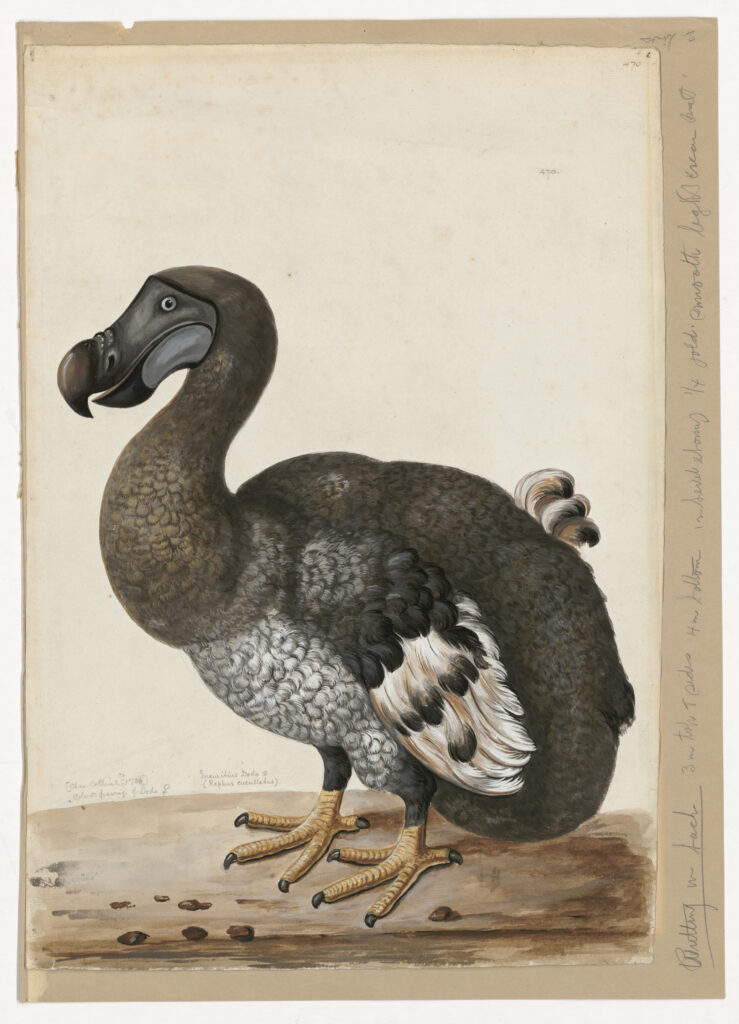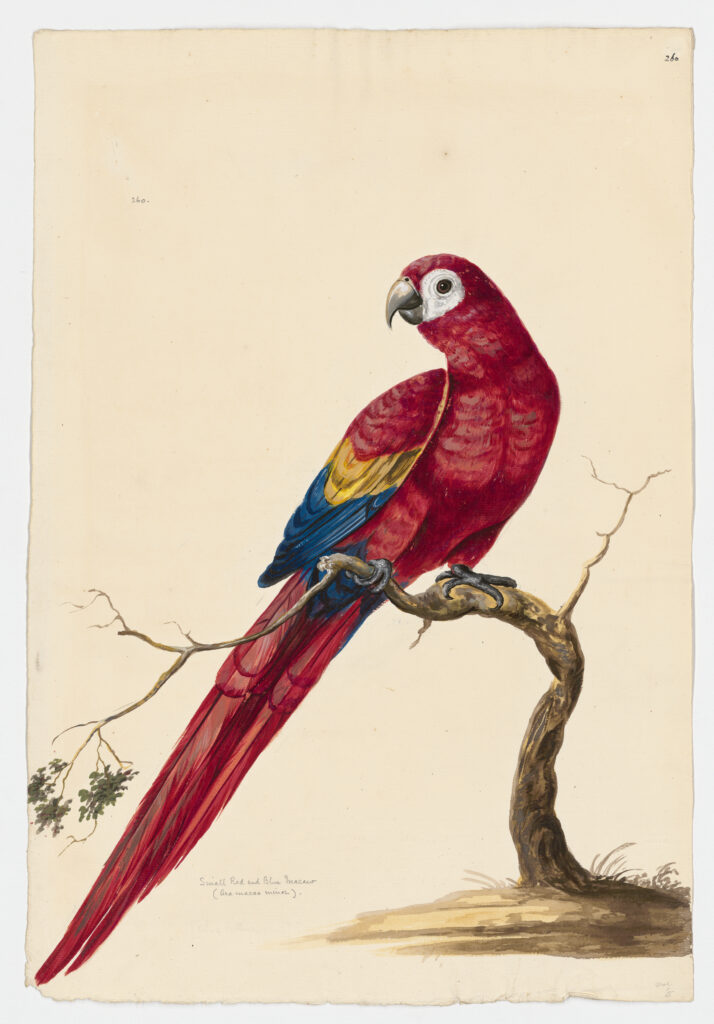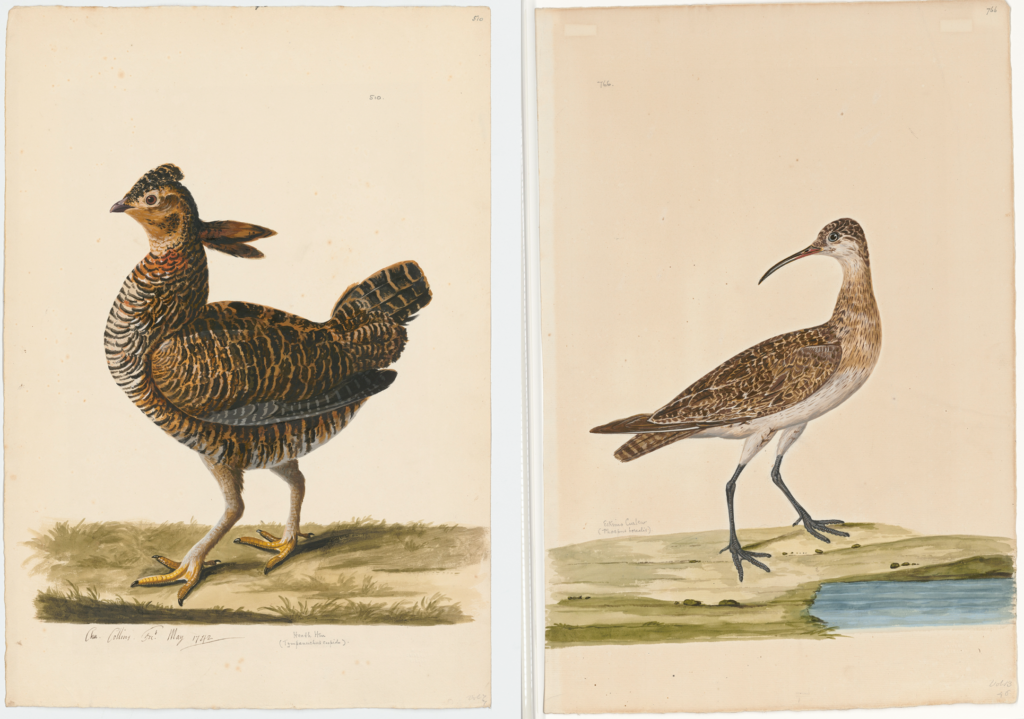Extinct Animals
The paintings of Taylor White’s paper museum harbour a number of extinct species depictions among their ranks. These species include the Mauritius dodo, a suspected Guadeloupe macaw, heath hen, Eskimo curlew, and great auk. Records of extinct species are priceless, and these paintings, as scientific depictions from specimens, are fairly accurate representations of these animals that have been driven to extinction.

The one obvious exception to this rule is the depiction of the Mauritius Dodo, a bird that went extinct years before White was born. The last recorded sighting of a dodo was in 1669, and the extinction of the species, attributed to the introduction of egg-eating rats to the island, likely occurred before the turn of the century. By the time Taylor White was commissioning paintings, the remaining specimens in Europe were severely degraded. Therefore, the painting of the dodo in the collection seems to be based on the famous Edward’s dodo rather than on a specimen.

The other species in the collection, however, were generally painted with specimens as models. Of these, the suspected Guadeloupe macaw, called “the Small Red Macaw” by White, stands out as a special case. This species lacks any surviving specimens apart from a single bone found in 2015, with the main evidence of its existence derived from explorers’ accounts and drawings from the 1600s and early 1700s. While there are no macaws in the Caribbean today, we do know of another macaw species that survived there until the 1800s. Therefore, this painting provides an interesting possible example of this species that is very poorly known. This bird likely went extinct due to overhunting and the exotic pet trade, which is still a major threat to extant macaws today.
The remaining extinct species of the collection are the heath hen, great auk, and Eskimo curlew. In the decades before their extinction, all of these birds were known for being extremely numerous; each species probably had a population in the millions before being decimated by hunting, egg harvesting, and habitat loss. All of these species have some specimens remaining. The last pair of great auks, a large seabird that lived in the northern Atlantic, was killed in 1844 for specimen collection. The heath hen, a subspecies of the Greater Prairie Chicken, inhabited the eastern seaboard of the United States. The last member of this species died on Martha’s Vineyard (an island off the coast of Massachusetts) in 1932. The Eskimo curlew is considered possibly extinct by the International Union for the Conservation of nature, with the last confirmed sighting in 1987. It used to make an incredible migration from its overwintering habitat in southern Argentina to its Arctic breeding grounds but hunting and habitat conversion had driven its numbers down severely by the early 1900s.

–Vida Javidi
![Drawing of a Great Auk from a 18th century specimen [modern geographical distribution: now believed to be extinct]](https://taylor-white.library.mcgill.ca/wp-content/uploads/2020/03/RBSCbw_taylor-white_827-front-scaled-e1584998138490-1024x714.jpg)